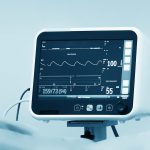EU adopted the new Medical Devices Regulation, replacing the two existing directives, the Medical Devices Directive and the Active Implantable Medical Devices Directive. The new regulation will enter into force in spring 2020.
Most of you are already aware of this.
Areas that need your attention and action would be changing device definitions, new QMS requirements, different premarket requirements, new identification traceability (UDI) requirements, expanded post market requirements and more stringent clinical evaluation requirements
YES, more stringent clinical evaluation requirements. Depending only on literature days or predicates are soon to end.
What 3 things you can do in 2018 to get you going and avoid last minute rush in 2019 to avoid over-spend and scrambling for resources as well as for those scarce “additional” funds
1) Take a Stock: List out all devices in an excel. Against each of them, list out what performance & safety data, clinical studies done if any, and all available patient data specific to each device that you have. Prepare a Gap analysis based on this step to see which devices you are OK versus which ones you are way low in data (and here we mean data on YOUR devices)
2) Hunting: ANY and ALL devices have clinical data. It’s matter of who has it and what form it is. Hospitals, Sites and Physicians have this data. List out all probable sources or parties that have (or may have) data on your devices. Don’t rely too much on your complaints data as most companies doesn’t have “clinical” angle in their processes as currently most take quality or PMS perspective for the complaints data.
3) Request, Borrow, Pay: Doing smaller pilots before formalizing detailed plans is advisable so that you can uncover data, the challenges and the quality in “as-is” scenario. Any devices that are high risk category and you are very sure data is not available, start working on a Registry or any prospective study setup. Devices that are not high risk, start talking to hospitals and/or physicians on how to acquire the data they have (in their charts or EMR or hospital records) of patients. Identifying what data they have, what is the process to acquire (excel or chart reading or interface to EMR) and the required permissions (IRB or Ethics approvals).



